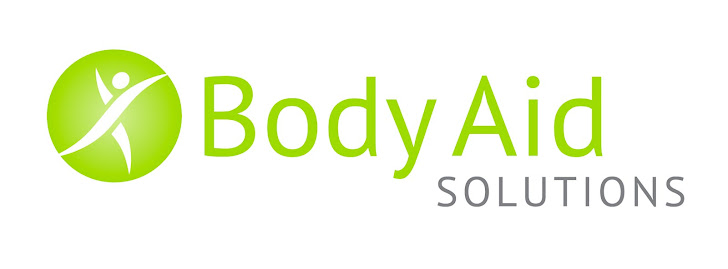Metabolic
Conditioning Training - The Brains Behind Getting Ripped
As fitness fanatics or industry professionals you would have
heard of different training methods such as hypertrophy training, high
intensity interval training, endurance training and functional training- and
would probably be able to give a text book answer if you were asked what these
approaches could achieve. Could the same be true of metabolic conditioning
training? Have you heard of it? Could you define it? Relatively new to the training
scene (relative to others) this method is also known as metabolic exercise,
metabolic training, or metabolic effect. If you want to see the best results
using the most cutting edge techniques then this one is definitely for you! If you want some more one to one advice contact us at www.body-aid.co.uk
 What is it?
What is it?
Many programmes are claiming to be “metabolic” so it is
important to point out the fakes! Metabolic exercise/conditioning is not
aerobic exercise- the body needs to be pushed past it’s anaerobic threshold for
it to be classed as metabolic conditioning. Another thing it isn’t….interval
training- MCT involves weights so if you’re having a full body heavy weights
session but having a rest for a few minutes between sets then this is not. Body
part focussed (single joint) workouts are most definitely not metabolic
conditioning and neither is standing one legged on a bosu ball whilst your
trainer/buddy throws a medicine ball across the gym at you to see if you can
balance.
Metabolic
Conditioning is defined as a system of exercises using the understanding
of endocrinology, exercise science, strength and conditioning to tax the body’s
major energy systems fully- the main goal being to maximise fat burning both
during and after exercise. Our experts can design an MCT programme tailored to each individuals current fitness, goals and any barriers to exercise you may face can be over come with our professional advice conatct us at www.body-aid.co.ukWhat is it for?
Most training methods focus on developing power, aerobic
capacity, muscular endurance or hypertrophy exclusively. Metabolic conditioning
however has a sole focus of burning as much fat as possible and are therefore
not modelled on any other method or protocol from the past. Cues are taken from
the sporting world, with parameters of fitness and challenges on all three body
energy systems. In simple terms, athletes do not train to look good, it is
merely a by product of their hard work and participation in their chosen
discipline. Football players, Rugby players, gymnasts, tennis players,
athletes and boxers all perform with a fluid steady movement pattern that can
change quickly into chaotic and unpredictable bursts of strength and speed again
before resuming as before. MCT is in pursuit to reproduce the nature of sport,
combining intervals, resistance training, body weight exercises, plyometrics
and explosive Olympic movements in one combined workout. They are hard hitting,
fast paced sessions with short or minimal rest periods, using a full fatigue approach.
Combination training
Unlike the single joint, single body part methods MCT
focuses on compound exercises working across multiple muscles groups and
several joints (squats, power cleans, deadlifts). It also engages hybrid
exercises, combining two or more exercises into one. Following the completion
of one exercises it quickly moves to the next with little downtime, joining
aerobic dominated lower body activities with anaerobically dominated upper body
movements for example barbell push press straight into burpees.
In 2001 the Journal Medicine and Science in Sports and
Exercise published a study to support the effects of these techniques. The
strategy produced a lower body fat and increased muscle gain as well as improve
endurance and muscle strength, opposed to aerobics alone. There have been many
more since this, with the most recent being in 2008. The Journal of Strength
and Conditioning Research produced a ten fold greater fat loss for protocols
intermixing weight training and aerobic exercise compared to separate training.
Dont go back to the dark side
A Meta-analysis (a study looking at many other studies) of
over 100 studies spanning a 25 year period looking at the benefit of aerobic
exercise left the exercise world shocked when it discovered in 1997 and
published (International Journal of Sports Nutrition) that there was only a 2lb
weight loss advantage using aerobic exercise over diet alone. A more recent
study published in 2009 by Exercise and Sport Science Reviews exemplified how
traditional aerobic and resistance training have no effect on stimulating the
metabolism to burn more body fat. If you compare the stark contrast between
these studies and those previously mentioned above it seems that MCT should
begin to come into focus for fitness fanatics and trainers alike.
By now you should have come to the conclusion that these
sessions are seriously intense, however you do not have to be super fit to
tolerate them. The cardinal rule of these sessions that rest is an absolute
must. If you don’t rest you will pace yourself and revert back to old school
cardio- this is the last thing that should happen whilst metabolic training. Ultimately
the more you rest the harder you can push, the harder you drive the more rest
you will need. Rest can happen at any
time as long as you are getting it.
To summarise
MCT is creating a storm in the fitness industry and changing
the way people think about their training and the way they are training others.
Although relatively new it is already having an impact and will address the
needs of 99% of people who train.














